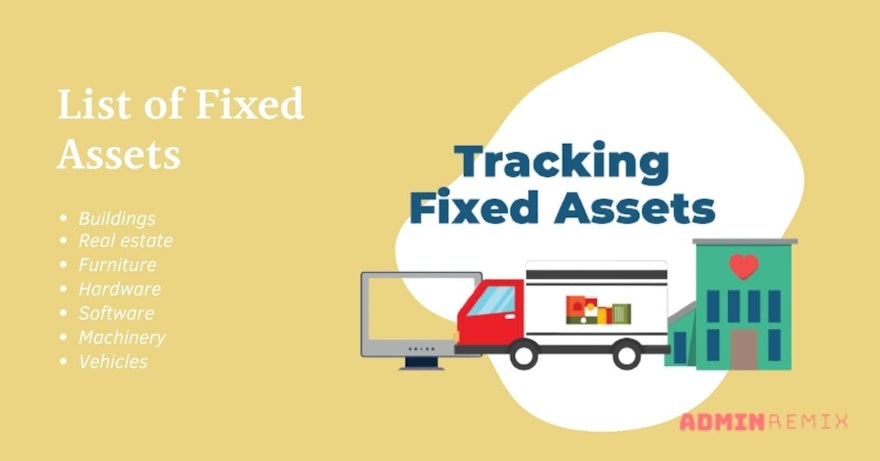Organizations own physical assets like buildings, land, vehicles, equipment, etc., also known as fixed assets. These help in the day-to-day execution of business and administrative operations. Given the significance, it is essential to track and manage fixed assets, so their contribution in revenue generation can be analysed. There’s a lot more that a business can benefit by implementing fixed asset tracking as a part of asset management practices. What is it and how is it done? In this article, we will explore the key aspects of tracking fixed assets and how it is beneficial to use asset-tracking software.
Which Fixed Assets Should be Tracked?
Businesses big and small own a substantial number of assets, tangible and intangible. So, which one should be tracked? For this article, we will be focusing on tangible or physical assets. Here’s what you should track under fixed assets:
Buildings: Facilities (office,, warehouses, etc.) used by an organization.
Real estate: Land owned or taken under lease, cost for any land improvements.
Furniture: Cabinets, tables, chairs, etc.
Hardware: Computers, laptops, tablets, mobiles, printers, and accessories.
Software: Software purchased or paid as a service.
Machinery: Machines used for manufacturing.
Vehicles: Cars, trucks, bikes, and other vehicles owned by an organization.
Usually a physical or tangible object is considered as fixed asset. Does that mean software is not an asset? Well, fixed asset is anything that directly contributes in earning business proceedings over a span of time. When you are using software it helps with day-to-day business operations thus playing a significant part in revenue generation. Considering that, software owned or paid as a service is a fixed asset. Know more about the types of fixed assets & what you should track.
What is Fixed Asset Tracking?
Now that you know which fixed assets need tracking, let’s understand what fixed asset tracking entails. Fixed asset tracking involves monitoring an organization’s physical assets, like:
Asset location
Condition of the asset
To whom it has been assigned
Present status (deployed/ under-maintenance/ needs maintenance/ to be disposed
Depending on the business needs, you can track more information concerning the state of your physical assets. When you track fixed assets it provides accurate and up-to-date information about the organization's assets, facilitating informed decision-making about their utilization and value.
Is Fixed Asset Tracking the same as Fixed Asset Management?
It’s a common mistake to confuse fixed asset tracking with fixed asset management. However, they are not the same. Fixed asset tracking records the location and condition of the asset, while asset management analyses asset maintenance and its utilization throughout its lifecycle. The latter is crucial for financial accounting of an organization. Fixed asset tracking leads up to fixed asset management, where the tracking data helps with proper management of the assets via analysis, projections, and assessments.
Why is Fixed Asset Tracking Important?
Effective fixed asset tracking is essential for businesses for several reasons.
1. It helps organizations maintain accurate financial records. Fixed assets represent a significant investment for most businesses, and accurate tracking ensures their value is recorded correctly on the balance sheet.
2. Fixed asset tracking maximizes asset utilization by enabling companies to make informed decisions about how and when to use assets.
3. It simplifies compliance and auditing by maintaining accurate records of assets, making it easier to comply with regulatory requirements and undergo audits.
4. Asset tracking reduces costs by preventing theft and loss, streamlining maintenance and repairs, and identifying underutilized assets that can be sold or leased to generate additional revenue.
What are the Best Practices of Fixed Asset Tracking?
Streamline fixed asset tracking by implementing the following best practices:
Establish a comprehensive asset database
Start by establishing a comprehensive fixed asset database that includes all relevant information about each asset, such as the asset type, location, deployment details, maintenance details, purchase date, purchase cost, etc. The database should be regularly updated with new purchases and disposals.
Use barcode for asset tagging
Using barcodes for tagging assets can help automate the process of fixed asset tracking and reduce errors associated with manual tracking. Barcodes are attached to each asset and scanned to update asset data.
Conduct regular audits
Conducting regular physical audits of fixed assets is an essential practice to ensure that the asset data is up-to-date and accurate. You should conduct audits at least once a year, including keeping records of the physical count of all assets, along with verification of their location and condition.
Implement a centralized system
Implementing a centralized system like fixed asset tracking software can help ensure consistency and accuracy in the tracking process. A centralized system provides visibility into asset location and status, making it easier to manage assets and make informed decisions.
Assign ownership and responsibility
Assigning ownership and responsibility for fixed assets is crucial to ensure accountability and reduce the risk of loss or theft. Each asset should have a designated owner who is responsible for its maintenance, usage, and disposal. The asset register should also include information on the person responsible for each asset.
Get Started with Fixed Asset Tracking with Asset Remix
Are you looking for integrated fixed asset tracking software for your organization? AssetRemix ITAM software comes equipped with advanced asset tracking features, simplifying the process of monitoring physical assets. Try the free trial version today and start tracking up to 50 assets. You can upgrade at your convenience. For more information, schedule a free consultation today.
